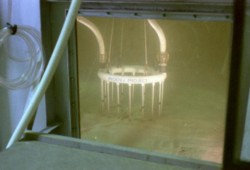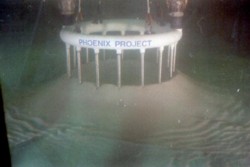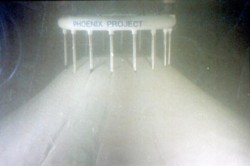
Slope — Density Relationship



Model testing at NRC shows that our idea of pumping water out from within a submerged sandfill during its construction does in fact work.
It succeeds in making steep side slopes formed of denser fill, suggesting therefore that this method has the potential of practical application in attempting to providing more useful and predictable underwater fill behaviour.
The model tests show slope steepness is a function of hydraulic head, so that it is the rate of seepage flow that counts. Average slopes of up to 38° were achieved, with local occurrences of up to 45°. These inclinations are to be compared with the benchmark value of 29°, that is, the submerged angle of repose for non-dynamic placement.
The higher densities achieved at the same time as steeper slopes is technically very interesting. The results showed density to be a tight function of slope angle. We checked that density cannot be increased by inward seepage flow through an existing pile, so the explanation can only be this: The closer packing of particles comes about simply by the grains being deposited on a slope. Because they come to rest on a slope, they enter a shear stress regime. The tighter packing is due to the ambient shear stress of the face. This density benefit can only be realized while the underwater fill is being built, that is, while the particles forming the slope are not burdened by overlying particles.
Of course simultaneous vibration of the drainage tubes, as in the Phoenix™ Machine, would be expected to really improve the sandfill parameters.